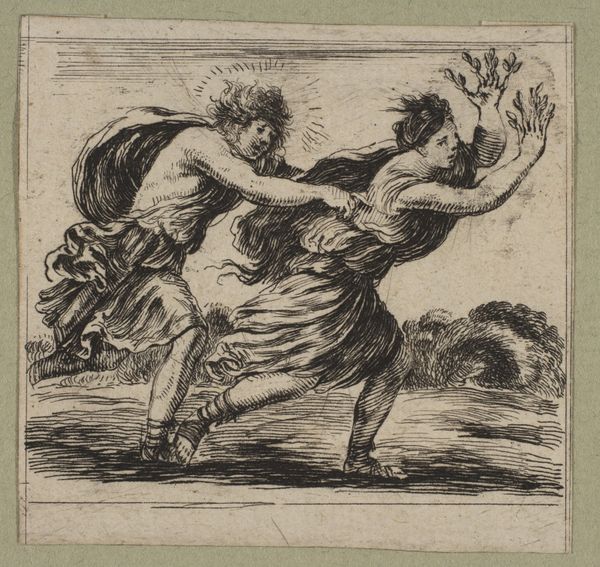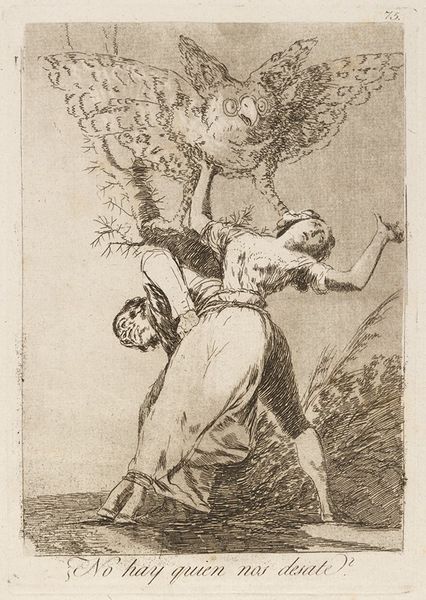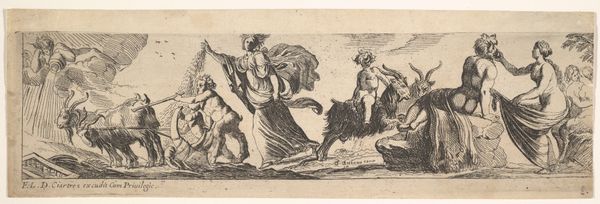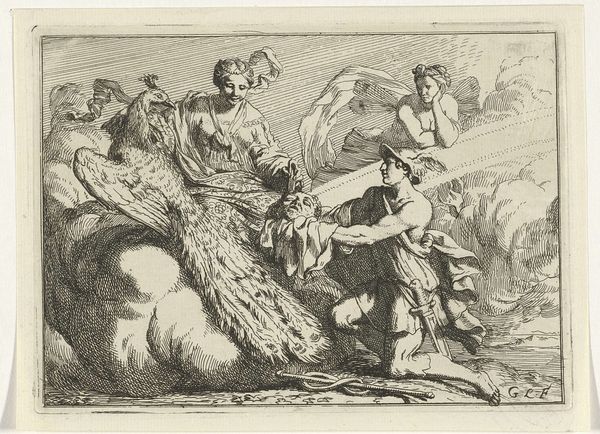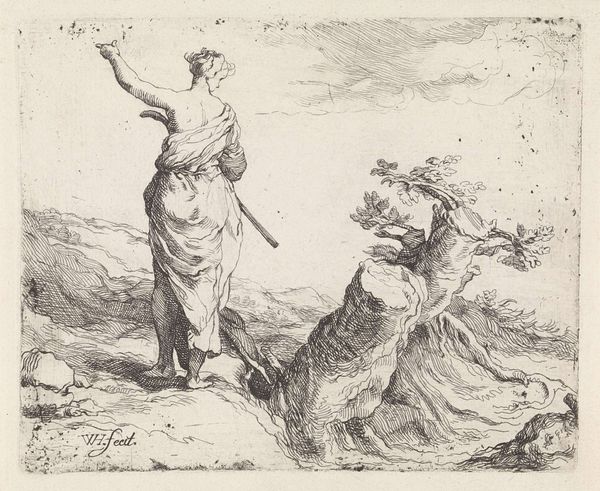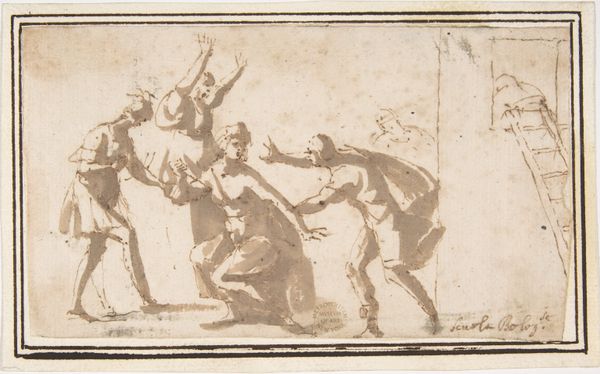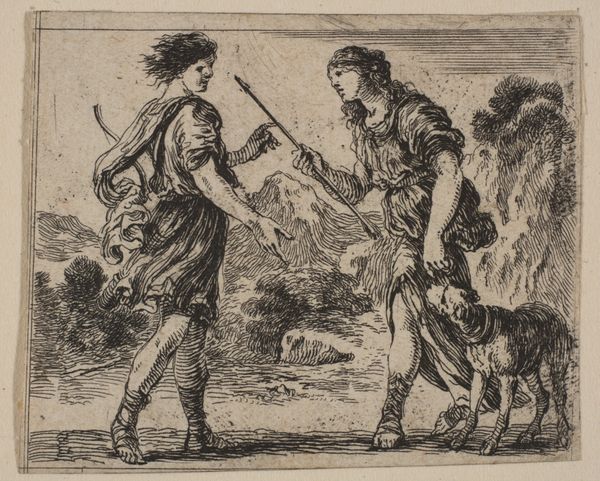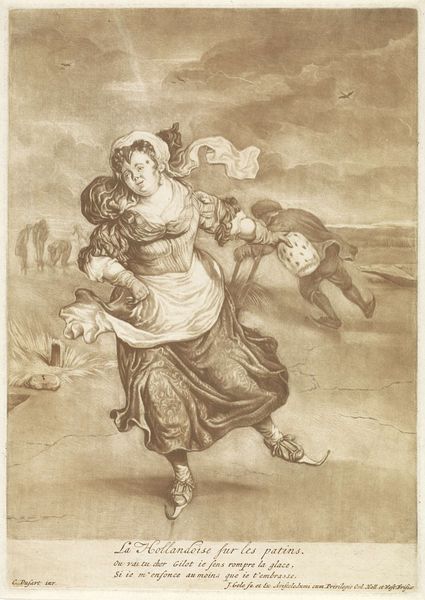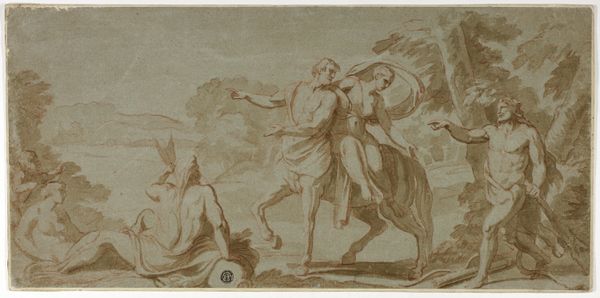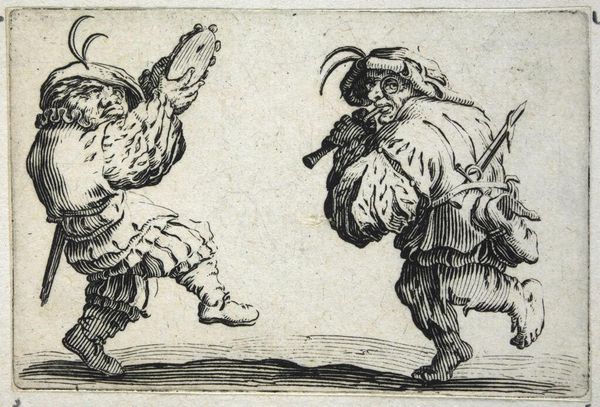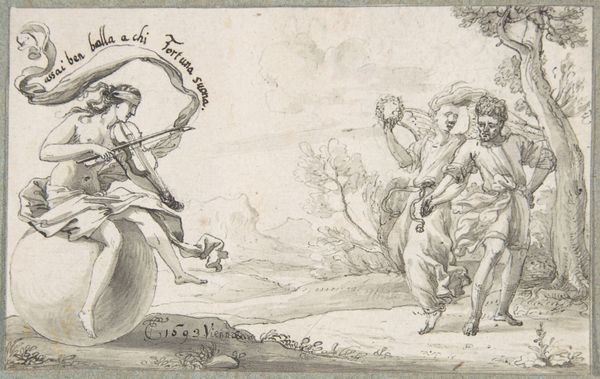
print, etching
#
baroque
# print
#
etching
#
figuration
#
history-painting
Dimensions: 1 13/16 x 1 3/16 in. (4.68 x 3.02 cm) (sheet)
Copyright: Public Domain
Curator: Here we have Stefano della Bella's etching, "Apollon et Daphné," likely created sometime in the 17th century. It's part of the Minneapolis Institute of Art's collection. Editor: It's certainly dramatic! The sense of movement is palpable, almost frantic. The starkness of the etching style really amplifies the tension between the figures. Curator: Della Bella, working within a Baroque aesthetic, employs etching—a printmaking technique where acid is used to bite into the metal plate. It's fascinating how such detail and dynamism can be achieved through this chemical process, and of course it allows for relative mass production. One can imagine this piece circulated among different workshops, or studios. Editor: Right, the reproduction factor! Beyond just the technical skill evident here, what immediately strikes me is the representation of power dynamics at play. The narrative—Apollo pursuing Daphne, who then transforms into a laurel tree to escape his advances—speaks volumes about patriarchal structures and the denial of agency. It echoes even today when women are not believed, when women have no real options, when no means are afforded to protect their bodies and their rights to autonomy. Curator: Precisely. Thinking about the materials, though, we’re dealing with relatively accessible technologies, but that image serves, via myth, to legitimize the elite status that enabled Della Bella’s craft. The labour that goes into producing acid, managing a printing press, and so on, are as relevant as the narrative. What kind of training did Della Bella have? Who would purchase a piece like this and where? Editor: Agreed! This brings to the surface how power can both limit and enable, depending on where you're situated. It highlights issues of gendered access and control in both the story depicted and in the conditions that facilitated this image making. It gives material form to these intangible struggles of women vs. man. Curator: A valuable point to keep in mind as we view artwork from earlier eras. Editor: Indeed. Seeing this now reminds me to stay ever aware of who controls both the physical means and the conceptual framework of cultural production.
Comments
No comments
Be the first to comment and join the conversation on the ultimate creative platform.
